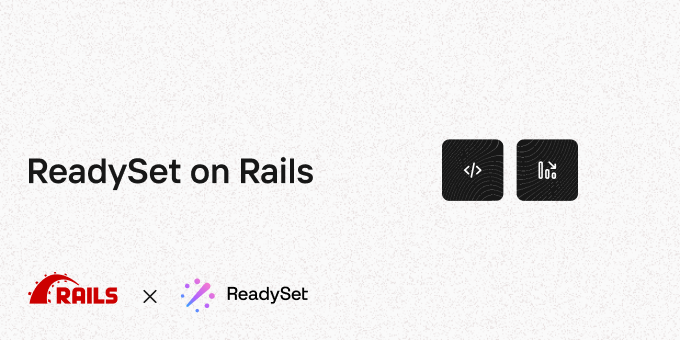Readyset on Rails: Read Replica Simplicity, Cache Performance
2 min read
•
about 2 years ago
Now, you can integrate Readyset into your Ruby on Rails app in the same way you would a traditional read replica: by changing a couple of lines in your database config file.
Once integrated, Readyset will give you the performance and scalability benefits of caching without worrying about cache invalidation or management.
Check out our quickstart today to start caching in fifteen minutes or less.
Why Readyset for Rails Applications?
As Rails applications grow, they start to encounter performance bottlenecks due to factors like suboptimal queries, missing database indices, large API payloads, inadequate hardware, and inefficient code. These performance and scalability bottlenecks can be catastrophic, since they often lead to both unhappy users and sleepless nights for the engineering teams responsible for fixing them.
Although Rails provides built-in features to help developers tackle performance challenges, including read replica (multiple database) support and low-level caching support, these features are either simple to reason about but ineffective in improving performance, or they require large amounts of tuning and customization but get the job done.
Consider read replicas: splitting traffic between a primary database and read replicas with Ruby on Rails is trivial: you just need to change a few lines in a configuration file. However, there are limited benefits you get from read replicas in web-scale workloads, especially for heavyweight queries. Caching is therefore an inevitable addition to most application architectures once these scaling bottlenecks are hit.
Low-level caching, however, suffers from the opposite problem: although it can be a highly effective solution for eliminating performance bottlenecks in an application (you can’t do better than O(1) reads!), it requires a large amount of fine tuning and customization to ensure that it works well in a production setting. Oftentimes, it’s considered a last resort simply due to these additional complexities, and is used alongside read replicas.
Now, with Readyset, you can get the best of both worlds: you can integrate Readyset into your Ruby on Rails app in the same way you would a traditional read replica, while getting more bang for your buck and reaping the benefits of caching while avoiding all of the problems.
Questions? Feedback? We’d love to hear from you! Join our Slack to start a conversation.
Get started caching by walking through the Readyset quickstart.

Authors